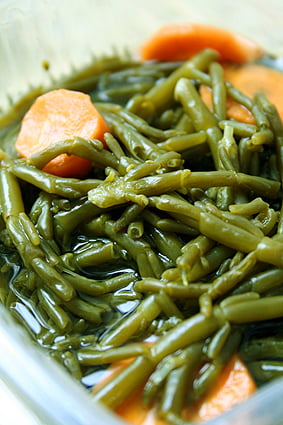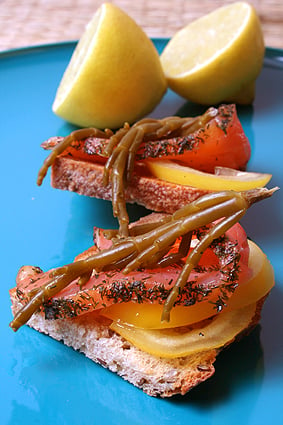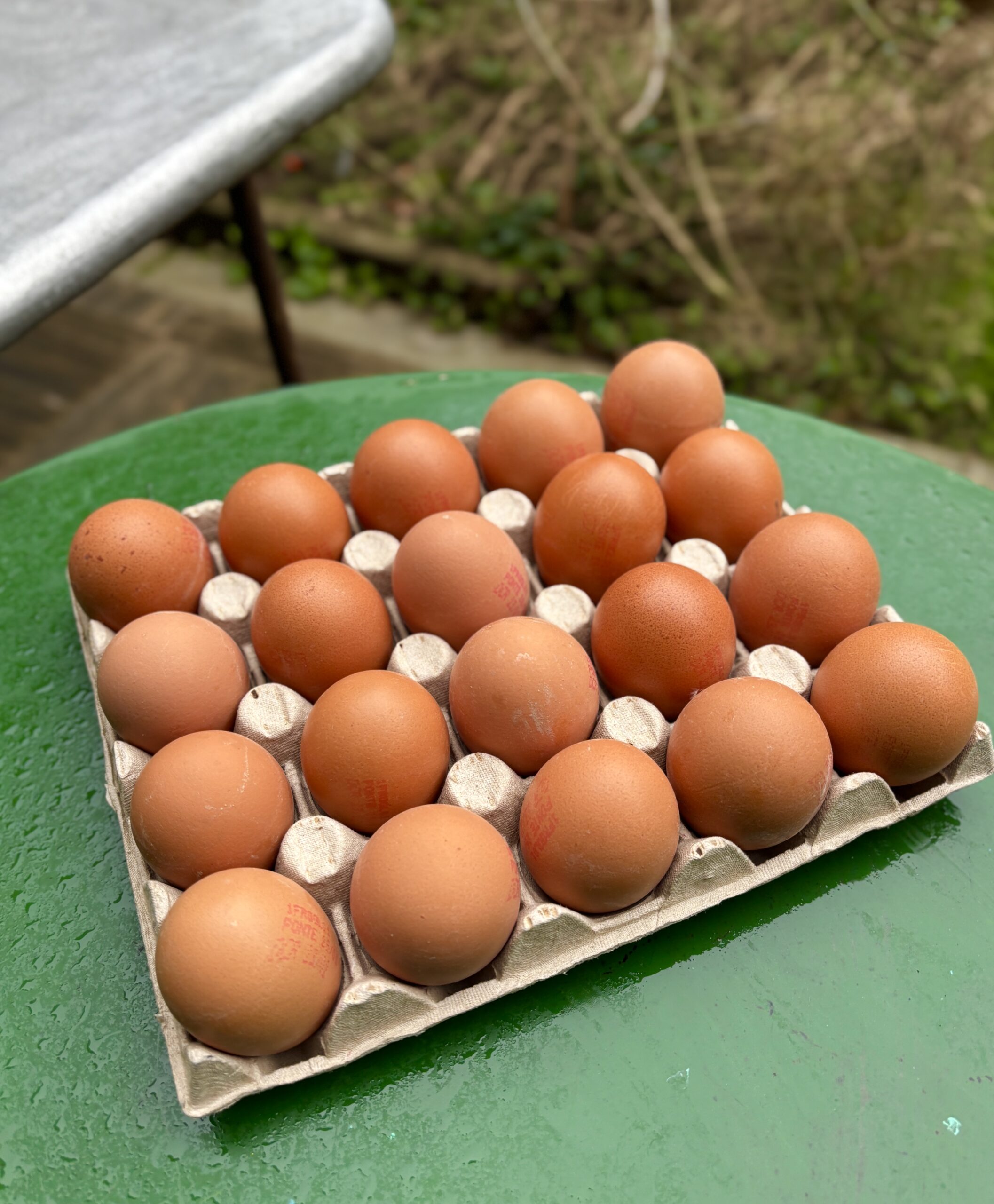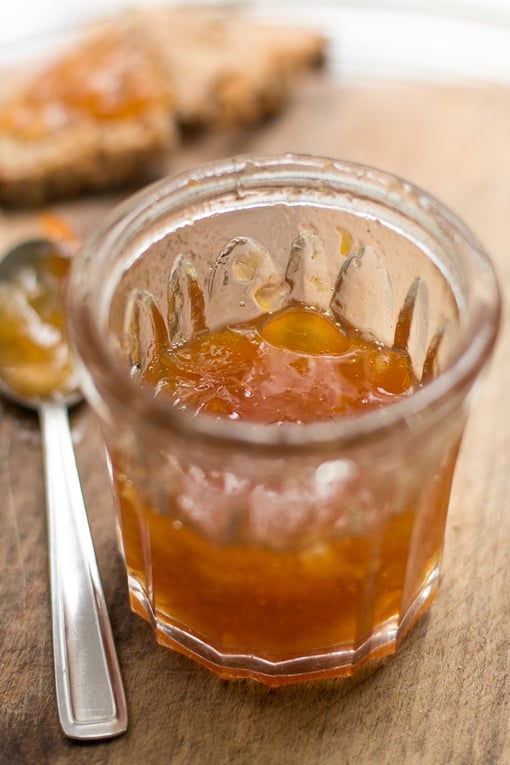Seaweed Sandwiches
My first experience with eating seaweed was when my fourth-grade teacher, Mrs. Barnett, brought in a big bag of gnarled dried Japanese seaweed, presumably to familiarize us with foods from other cultures. Few of us kids growing up in sheltered New England would touch the stuff, although I took a little taste, but didn’t share her enthusiasm for the sea-scented tangle of salty greens.
So she ate the whole bag herself.
Later that day, Mrs. Barnett went home early, doubled-over, and clutching her stomach.

As an adult, I’ve broadened my horizons, overcome any aversion, but most of the seaweed I consume comes surrounding tekka-make rolls, or other sushis as they’re called in France. (They add the “s” to pluralize them, even though you don’t pronounce it.)
My salt man, Monsieur Dion, who I used to get my fleur de sel and grey sea salt from (before he closed), appeared at my market on Sunday with a big barrel of Salicornes Fraîches, pickled in vinaigre de vin blanc with carrots, onions, and a few branches of thyme, which his brother made in Brittany. When I visited Brittany last summer, we visited Algoplus, where I tasted the locally-harvested salicornes, which had the curious taste of green beans. And in fact, the French call them haricots de mer, or green beans of the sea. In English, they’re called ‘glasswort’. According to Judy Rodgers in, The Zuni Cookbook (a book anyone interested in cooking should own) she includes a recipe for Pickled Glasswort and says the English used to call them “chicken claws”.
While the haricots de mer were tasty, just a forkful was enough, although perhaps anything served with a dollop of crème fraîche, as they were served, certainly seems more appealing. And although I conceded that they were tasty, I resisted the tempation to buy a jar, assuming they’d end up in my ‘Too Good To Use’ shelf (which I feel will soon collapse.)

After considering their vinegary, cornichon-like taste, I mentioned to Monsieur Dion that they’d be good served alongside or atop something fatty and meaty, like pâte or a rich smear of rillettes, and before I could finish my sentence (which, as a rule, takes much longer for me in French than in English), he produced a platter bearing slices of crusty baguette spread with rillettes de porc, topped with a piece of salicorn. The next day, I used a few slices of toasted pain aux ceriales to make my own sandwich layered with juicy, vibrant-yellow slices of tomato, cured salmon with lots of fragrant dill, a thin layer of coarse-grained mustard, all finished with a squeeze of puckery lemon juice. I topped them off with a few ‘sprigs’ (I guess they’re sprigs, although in French, there’s probably a special word used exclusively for ‘sprigs’ of les salicornes.)
My sandwiches were terrific, and I spent the afternoon not clutching my stomach, but visiting the breathtaking Musée de l’Orangerie, then walking home along the Seine, without incident…and nary a rumble from below.
Algoplus
Zone du Bloscon
Roscoff, France
Tél: 02 98 61 14 14
















